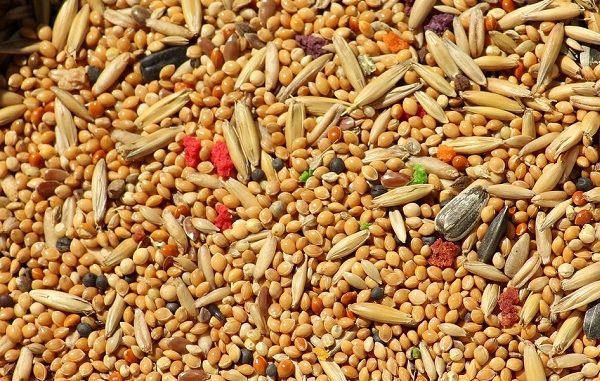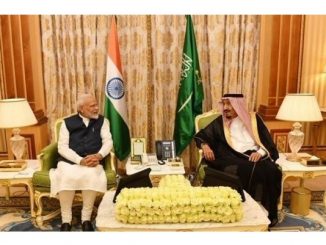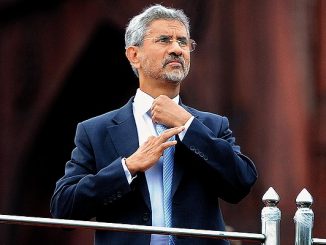
Dec 4: Union Minister for Commerce and Industry Shri Piyush Goyal will be the Chief Guest at the ‘Millets-Smart Nutritive Food’ Conclave to be held in New Delhi tomorrow (05 December 2022, Monday). The Conclave is being organized by the Ministry of Commerce and Industry through its apex agricultural export promotion body, Agricultural and Processed Food Products Export Development Authority (APEDA) with the objective of promoting the export of millets. The Conclave is to be a pre-launch event of the ‘International Year of Millets – 2023’ (IYoM-2023).
At the Millets Smart Nutritive Conclave, stakeholders of the supply chain such as Farmer Producer Organisations, Start-ups, exporters, producers of millet-based value-added products are key participants. At the Conclave, exhibition and B2B meeting will also be organized to showcase Indian millets and millet-based products.
Minister of State for Commerce & Industry Smt. Anupriya Patel will be the Guest of Honour at the Millets Conclave. Senior government officials who will be present on the occasion include Union Commerce Secretary, Shri Sunil Barthwal, Agriculture Secretary, Shri Manoj Ahuja, APEDA Chairman Dr. M. Angamuthu and Joint Secretary, Department of Commerce, Dr M. Balaji.
The millets export promotion programme also comes at the backdrop of the proposal of India that was supported by 72 countries which lead to the United Nations’ General Assembly (UNGA) declaring 2023 as International Year of Millets (IYoM) on March 5, 2021.The government is currently organising IYoM-2023 at domestic and international level to popularize Indian millets as well as its value-added products across the world and make it a peoples’ movement.
At the first-of-its-kind Millets Conclave, the government will release e-catalogue on 30 potential importing countries and 21 millet producing states of India. Also, a knowledge book on Millets prepared in association with Knowledge partner ‘Yes Bank’ will be released on the occasion.For exports of Indian millets’ promotion, the government has planned to facilitate participation of exporters, farmers and traders in 16 international trade expos and Buyer Seller Meets (BSMs).
As per the government’s robust strategy to promote millets, Indian missions abroad would be roped in branding and publicity of Indian millets, identification of international chefs as well as potential buyers such as departmental stores, supermarkets and hypermarkets for organizing B2B meetings and direct tie-ups.
In addition, Ambassadors of Foreign missions in India of the targeted countries and potential importers have been invited to showcase various millet-based products, including Ready to Eat millet products and facilitate B2B meetings.
Centre has also planned to organize millet promotional activities in South Africa, Dubai, Japan, South Korea, Indonesia, Saudi Arabia, Sydney, Belgium, Germany, United Kingdom and United States of America by facilitating participation of different stakeholders from India in some of the significant food shows, Buyer Seller Meets and Road Shows.
As part of the promotion of Indian millets, APEDA has planned to showcase millets and its value-added product at various global platforms such as Gulfood 2023, Foodex, Seoul Food & Hotel Show, Saudi Agro Food, Fine Food Show in Sydney (Australia), Belgium’s Food & Beverages Show, Germany’s BioFach and Anuga Food Fair, San Francisco’s Winter Fancy Food Show, etc.
India is one of the leading producers of millets in the world with an estimated share of around 41 percent in the global production. As per FAO, world production of millets in the year 2020 was 30.464 million metric tonnes (MMT) and India’s share was 12.49 MMT, which accounts to 41 percent of the total millet production. India recorded 27 percent growth in millet production in 2021-22 as compared to millet production in the previous year was 15.92 MMT.
India’s top five millet producing states are Rajasthan, Maharashtra, Karnataka, Gujarat and Madhya Pradesh. Share of export of millets is nearly 1% of the total millet production. Exports of millets from India include mainly whole grain and the export of value-added products of millets from India is negligible.
However, it is estimated that the millets market is set to grow from its current market value of more than USD 9 billion to over USD 12 billion by 2025. APEDA would also organise food sampling and tasting at the retail level and in key local bazaars of targeted countries where individual, household consumers can gain familiarity with millet products.
Centre has created the Nutri Cereals Export Promotion Forum to give impetus to the export of potential products, including millets, and to remove the bottlenecks in the supply chain of Nutri cereals.
Millets have superior nutritional values in comparison to highly consumed cereals such as rice and wheat. Millets are rich in calcium, iron, and fibers that help in fortifying essential nutrients for the healthy growth in children. Also, the usage of millets in infant food and nutrition products is increasing.
As per the DGCIS data, India registered a growth of 8.02% in the export of millets in the financial year 2021-22 as the export of millets was 159,332.16 metric tonne against 147,501.08 metric tonne during the same period last year.India’s major millet exporting countries are U.A.E, Nepal, Saudi Arabia, Libya, Oman, Egypt, Tunisia, Yemen, U.K and U.S.A. The varieties of millets exported by India include Bajra, Ragi, Canary, Jawar, and Buckwheat.The major millet importing countries in the world are Indonesia, Belgium, Japan, Germany, Mexico, Italy, the U.S.A, United Kingdom, Brazil and Netherlands.
There are 16 major varieties of millet, which are produced and exported, including Sorghum (Jowar), Pearl Millet (Bajra), Finger Millet (Ragi) Minor Millets (Kangani), Proso Millet (Cheena), Kodo Millet (Kodo), Barnyard Millet (Sawa/Sanwa/Jhangora), Little Millet (Kutki), Two Pseudo Millets (BuckWheat/Kuttu), Ameranthus (Chaulai) and Brown Top Millet.
Disclaimer: We donot claim that the images used as part of the news published are always owned by us. From time to time, we use images sourced as part of news or any related images or representations. Kindly take a look at our image usage policy on how we select the image that are used as part of the news.


